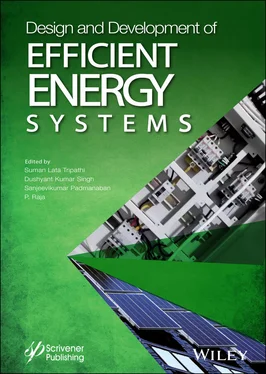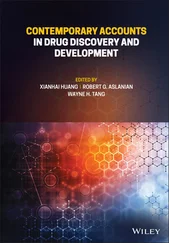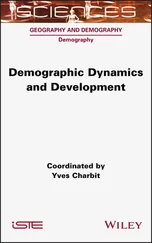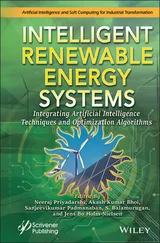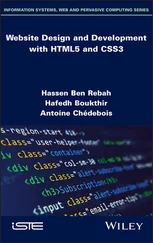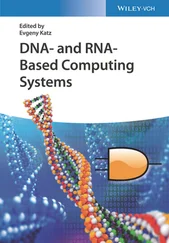4.4.3 IoT End Device and Backend Server
Further, control messages and acquired healthcare data are exchanged between the leaf device and edge data server. The end devices send the patient’s condition data collected from various sensors to the edge data server and gets instructions to perform from the backend server. The computation tasks are carried out by using various techniques like machine learning. The severs at the back end can compute any number of heavy data and uses intensive algorithms computation for processing all the data acquired from the end devices; the instructions are sent as a notification to the end device.
Data analytics are performed in real time and for achieving optimized solution with low latency edge computing is used. The computation can be done by the end IoT devices that are based on the instruction and guidelines from the edge device which is provided by the cloud server. The MQTT client runs on IoT end device while the MQTT server runs on the edge server that can also further request various services from the cloud. MQTT can also be replaced by CoAP IoT protocol as an alternative. Tensor Flow can be used for machine learning [1, 6, 32]. It is an open-source free library that consists of tools with a flexible ecosystem, community resources and libraries for building and deploying machine learning applications.
4.5 Conclusion and Future Directions
The smart healthcare system consists of IoT wearables and sensors to collect patients’ healthcare data. Edge computing technology is used to extract the relevant information from the huge set of data. It is mainly used to minimize the response time, to eliminate network latency, saving bandwidth, and to provide an energy-efficient system. As the storage and computation is done in the edge nodes, data can be protected efficiently. The edge computing is coupled with machine learning technology to obtain real-time solutions with high efficiency. The machine learning is used to predict and make correct decisions in an emergency situation based on the patient’s health condition and to provide early intimation of risk so that preventive measures can be taken. The usage of IoT devices and smartphones improves patient interaction and is highly useful for remote monitoring systems, caring for aged persons, managing people with chronic diseases, etc. Various self-caring applications can be developed, so that patients can monitor their own health, and the application would notify the healthcare provider or even an ambulance in the case of an emergency. The smart healthcare system adopts IoT and machine learning technologies to provide better decision making, real-time monitoring, personalized healthcare, long term care, low hospital expenses, improved hospital service, and better treatment.
In future, any emergency situation in the field of healthcare can be easily handled by smart healthcare systems. These systems are highly used to cure diabetics, many heart diseases can be predicted and prevented, home care for aged persons can be provided, the healthcare provider can be contacted anytime and anywhere for the consultation via virtual care, etc. Basically, patient-centric healthcare systems will be developed and used efficiently, which has benefits both for the healthcare providers in the hospitals and patients.
1. M. Abadi, P. Barham, J. Chen, Z. Chen, A. Davis, J. Dean, M. Devin, S. Ghemawat, G. Irving, M. Isard, M. Kudlur, J. Levenberg, R. Monga, S. Moore, D.G. Murray, B. Steiner, P.A. Tucker, V. Vasudevan, P. Warden, M. Wicke, Y. Yu, and X. Zhang, Tensor Flow: A system for large-scale machine learning, OSDI, 2016.
2. Aniket, The Role of IoT in Healthcare: Applications and Implementation, finoIT, https://www.finoit.com/blog/the-role-of-iot-in-healthcare-space/, 2020.
3. Y. Ai, M. Peng and K, Zhang, Edge computing technologies for Internet of Things: a primer, Digital Communications and Networks , Vol. 4(2), P. 77-86, 2018.
4. I. Azimi, J. Takalo-Mattila, A. Anzanpour, A.M. Rahmani, J.P. Soininen and P. Liljeberg, Empowering healthcare IoT systems with hierarchical edge-based deep learning, In IEEE/ ACM International Conference on Connected Health: Applications, Systems and Engineering Technologies (CHASE) , IEEE, P. 63–68, 2018.
5. Z. Becvar and P. Mach Mobile Edge Computing: A Survey on Architecture and Computation Offloading, IEEE Communications Surveys and Tutorials , Vol. 19(3) p. 1628 - 1656, 2017.
6. L. Bote-Curiel, S. Muñoz-Romero, A. Gerrero-Curieses and J.L. Rojo-Álvarez, Deep Learning and Big Data in Healthcare: A Double Review for Critical Beginners, Applied Science , Vol. 9(2331), 2019.
7. L. Chen, S. Zhou and J. Xu, Energy Efficient Mobile Edge Computing in Dense Cellular Networks, IEEE ICC Green Communications Systems and Networks Symposium, 2017.
8. S.K. Dhar, S.S. Bhunia and N. Mukherjee, Interference Aware Scheduling of Sensors in IoT Enabled Health-Care Monitoring Systems, Fourth International Conference of Emerging Applications of Information Technology , P. 152 – 157, 2014.
9. P. Dineshkumar, R. SenthilKumar, K. Sujatha, R.S. Ponmagal, V.N. Rajavarman, Big data Analytics of IoT based Health Care Monitoring System, IEEE Uttar Pradesh Section International Conference on Electrical, Computer and Electronics Engineering (UPCON), Indian Institute of Technology (Banaras Hindu University) Varanasi, India, P. 55 – 60, 2016.
10. K. Dolui and S.K. Datta, Comparison of edge computing implementations: Fog computing, cloudlet and mobile edge computing, Conference on Global Internet of Things Summit (GIoTS) P. 1-6 2017.
11. E.O. Dowd, How Edge Computing Enhances Health IT Infrastructure, HIT Infrastructure, https://hitinfrastructure.com/news/how-edge-computing-enhances-health-it-infrastructure, 2018.
12. B. Felter, 5 Use Cases You Need to Know for Edge Computing and Healthcare, Vxchnge, https://www.vxchnge.com/blog/edge-computing-use-cases-healthcare, 2019.
13. A. Garcia-Saavedra, G. Iosifidis, X. Costa-Pérez, and D.J. Leith, Joint Optimization of Edge Computing Architectures and Radio Access Networks, IEEE Journal on Selected Areas in Communications , P. 99, 2018.
14. T. N. Gia, I.B. Dhaou, M. Ali, A.M. Rahmani, T. Westerlund, P. Liljeberg, and H. Tenhunen, Energy efficient fog-assisted IoT system for monitoring diabetic patients with cardiovascular disease, Future Generation Computer Systems , Vol. 93, P. 198-211, 2019.
15. Y. Hao, Y. Jiang, M.S. Hossain, M.F. Alhamid and S.U. Amin, Learning for smart edge: cognitive learning-based computation offloading, In Mobile Networks and Applications , Springer, P. 1–7, 2018.
16. M. Hasan, Top 10 Potential Applications of Machine Learning in Healthcare, UbuntuPIT, https://www.ubuntupit.com/top-10-potential-applications-of-machine-learning-in-healthcare/, 2019.
17. IoT & Edge Technology: Transforming the Global Supply Chain, ACSIS, https://acsisinc.com/blog/iot-edge-technology-transforming-the-global-supply-chain/, 2020.
18. F. Jalali, S. Khodadustan, C. Gray, K. Hinton and F. Suits, Greening IoT with fog: a survey. In 2017 IEEE International Conference on Edge Computing (EDGE), P. 25–31, 2017.
19. M.R. Kinthada, S, Bodda, and S.B.K. Mande, eMedicare: mHealth solution for Patient Medication Guidance and Assistance, International conference on Signal Processing, Communication, Power and Embedded System (SCOPES) , P. 657-661, 2016.
20. R.N. Kirtana and Y.V. Lokeswari, An IoT Based Remote HRV Monitoring System for Hypertensive Patients, IEEE International Conference on Computer, Communication, and Signal Processing , 2017.
21. J.H. Ko, T. Na, M.F. Amir and S. Mukhopadhyay, Edge-host partitioning of deep neural networks with feature space encoding for resource-constrained internet-of-things platforms, 15th IEEE International Conference on Advanced Video and Signal Based Surveillance (AVSS), IEEE, P. 1–6, 2018.
Читать дальше
